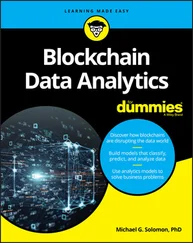1 Cover
2 Preface
3 Introduction I.1. Why this book? I.2. The scope of this book I.3. The challenge of this book I.4. How to read this book
4 PART 1: The Sharing Economy or the Emergence of a New Business Model 1 The Sharing Economy: A Concept Under Construction 1.1. Introduction 1.2. From simple sharing to the sharing economy 1.3. The foundations of the sharing economy 1.4. Conclusion 2 An Opportunity for the Business World 2.1. Introduction 2.2. Prosumption: a new sharing economy trend for the consumer 2.3. Poverty: a target in the spotlight of the shared economy 2.4. Controversies on economic opportunities of the sharing economy 2.5. Conclusion 3 Risks and Issues of the Sharing Economy 3.1. Introduction 3.2. Uberization: a white grain or just a summer breeze? 3.3. The sharing economy: a disruptive model 3.4. Major issues of the sharing economy 3.5. Conclusion 4 Digital Platforms and the Sharing Mechanism 4.1. Introduction 4.2. Digital platforms: “What growth!” 4.3. Digital platforms or technology at the service of the economy 4.4. From the sharing economy to the sharing platform economy 4.5. Conclusion
5 PART 2: Big Data Analytics at the Service of the Sharing Economy 5 Beyond the Word “Big”: The Changes 5.1. Introduction 5.2. The 3 Vs and much more: volume, variety, velocity 5.3. The growth of computing and storage capacities 5.4. Business context change in the era of Big Data 5.5. Conclusion 6 The Art of Analytics 6.1. Introduction 6.2. From simple analysis to Big Data analytics 6.3. The process of Big Data analytics: from the data source to its analysis 6.4. Conclusion 7 Data and Platforms in the Sharing Context 7.1. Introduction 7.2. Pioneers in Big Data 7.3. Data, essential for sharing 7.4. Conclusion 8 Big Data Analytics Applied to the Sharing Economy 8.1. Introduction 8.2. Big Data and Machine Learning algorithms serving the sharing economy 8.3. Big Data technologies: the sharing economy companies’ toolbox 8.4. Big Data on the agenda of sharing economy companies 8.5. Conclusion
6 PART 3: The Sharing Economy? Not Without Big Data Algorithms 9 Linear Regression 9.1. Introduction 9.2. Linear regression: an advanced analysis algorithm 9.3. Other regression methods 9.4. Building your first predictive model: a use case 9.5. Conclusion 10 Classification Algorithms 10.1. Introduction 10.2. A tour of classification algorithms 10.3. Modeling Airbnb prices with classification algorithms 10.4. Conclusion 11 Cluster Analysis 11.1. Introduction 11.2. Cluster analysis: general framework 11.3. Grouping similar objects using k-means 11.4. Hierarchical classification 11.5. Discovering hidden structures with clustering algorithms 11.6. Conclusion
7 Conclusion
8 References
9 Index
10 End User License Agreement
1 Chapter 2Table 2.1. Configuration of new trade methods (Ertz 2017)
2 Chapter 5Table 5.1. What happens on the Internet in one minute (2018) Table 5.2. The growth of storage capacity
3 Chapter 7Table 7.1. Various Big Data applications at Netflix Table 7.2. The different types of data Table 7.3. Challenges associated with Big Data
4 Chapter 8Table 8.1. The various applications of Machine Learning algorithms Table 8.2. Big Data technologies by field Table 8.3. The evolution of Lyft’s data analysis pipeline
5 Chapter 9Table 9.1. Descriptive statistics Table 9.2. List of explanatory variables Table 9.3. RMSE for different regression models
6 Chapter 10Table 10.1. How do we choose the classification algorithm? Table 10.2. MSE and RMSE for each model Table 10.3. Number of observations by distance Table 10.4. The price of the first five randomized observations Table 10.5. Comparison of RMSE values for different predictors
7 Chapter 11Table 11.1. Comparison of different criteria
1 Chapter 1Figure 1.1. P2P diagram (Evroux et al. 2014). For a color version of this figure...
2 Chapter 2Figure 2.1. Prosumer2. For a color version of this figure, see www.iste.co.uk/se...Figure 2.2. Honeycomb representation of the collaborative economy (Owyang 2016)....
3 Chapter 3Figure 3.1. Uber’s business model (Diridollou et al. 2016). For a color version ...
4 Chapter 4Figure 4.1. Examples of digital platforms for entertainment and communication se...
5 Chapter 5Figure 5.1. Nature and types of data. For a color version of this figure, see ww...
6 Chapter 9Figure 9.1. Difference between model and reality. For a color version of this fi...Figure 9.2. The logistics function Figure 9.3. Overview of the data-set Figure 9.4. Variables with missing values Figure 9.5. The emptiness of the function for all variables. For a color version...Figure 9.6. Apartment prices in descending order. For a color version of this fi...Figure 9.7. Correlation matrix. For a color version of this figure, see www.iste...Figure 9.8. Price distribution. For a color version of this figure, see www.iste...Figure 9.9. Apartment prices as a function of certain characteristics. For a col...Figure 9.10. Price per number of bedrooms/bathrooms. For a color version of this...Figure 9.11. Distribution of prices as a function of amenities. For a color vers...Figure 9.12. The price/neighborhood relationship. For a color version of this fi...
7 Chapter 10Figure 10.1. Example of a decision tree Figure 10.2. Coordinates of entities divided into two classes. For a color versi...Figure 10.3. How SVM works. For a color version of this figure, see www.iste.co....Figure 10.4. How does kNN work?. For a color version of this figure, see www.ist...Figure 10.5. Example neural network Figure 10.6. The 10 most important features (decision tree). For a color version...Figure 10.7. The 10 most important features (Random Forest). For a color version...Figure 10.8. RMSE: score for the different models. For a color version of this f...
8 Chapter 11Figure 11.1. Distance calculation Figure 11.2. The principle of clustering. For a color version of this figure, se...Figure 11.3. Step 1: define the initial points for the centroids. For a color ve...Figure 11.4. Step 2: assign each point to the nearest centroid. For a color vers...Figure 11.5. K-means versus hierarchical classification. For a color version of ...Figure 11.6. Distribution of observations Figure 11.7. Determination of the number of clusters using the elbow method. For...Figure 11.8. The three clusters. For a color version of this figure, see www.ist...
1 Cover
2 Table of Contents
3 Begin Reading
1 v
2 iii
3 iv
4 xi
5 xii
6 xiii
7 xiv
8 xv
9 xvi
10 xvii
11 xviii
12 xix
13 xx
14 1
15 3
16 4
17 5
18 6
19 7
20 8
21 9
22 10
23 11
24 12
25 13
26 14
27 15
28 16
29 17
30 18
31 19
32 20
33 21
34 22
35 23
36 24
37 25
38 26
39 27
40 28
41 29
42 30
43 31
44 32
45 33
46 34
47 35
48 36
49 37
50 39
51 40
52 41
53 42
54 43
55 44
56 45
57 46
58 47
59 48
60 49
61 50
62 51
63 52
64 53
65 54
66 55
67 56
68 57
69 58
70 59
71 60
72 61
73 63
74 64
75 65
76 66
77 67
78 68
79 69
80 70
81 71
82 72
Читать дальше












